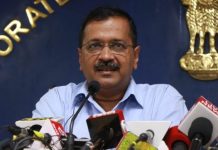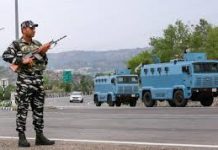
During the seventy years of India’s independence, we have marched forward on many fronts; especially expansion of industry and service sector and opening up of the economy to leverage the benefits of foreign trade. What a pity that every step put forward has pushed food grower of our country in despondency. This has been empirically tested by the economists in terms of dwindling profits in agriculture due to stagnation in income and burgeoning number of suicides in states like Tamil Nadu to highly progressive states like Punjab.
India is a vast country with diverse ecological, environmental, social, religious and ethnic milieu. Owing to diverse natural endowments different parts of the country face different sets of challenges in terms of development of infrastructure, urbanisation, industrialisation, health and education but agricultural distress is a phenomenon present in every state and all pervasive. At some places it is due to lack of irrigation facility, while others may be facing huge cost of drawing water from available sources.
A plethora of problems from depleting water table to lack of post harvest infrastructure, exploitation of farmers at the hands of middlemen, low price discoveries despite Minimum Support Price (MSP) of certain crops determined by the government, mounting debts of farmers for the funds borrowed from institutional and non-institutional sources of credit, inadequate crop-insurance cover, declining fertility of soil due mono-crop culture and subsequent rise in usage of fertilisers adding to the cost of farmers, delay in availability of seeds, fertilisers and credit (from institutional sources) during the cropping season, scarce extension services, backward and forward market linkages, pest attacks on cash crops like cotton- are some of the factors those have undermined the viability of agriculture as an occupation.
An all India National Sample Survey (NSSO) study (2003) reported that 40 per cent of the Indian farmers expressed their desire to quit farming as it is no more a profitable occupation.
The high cost of cultivation due to rising input costs and stagnation in the prices of agricultural commodities is the primary reason for driving the farmers away from their core-competence. The transformation of workforce from farming to non farming activities, which is apparently distressed induced transformation, has been adding an ever increasing number of reserve army of labourers. Pursuing farming for many generations, these families have no other skill-set and capital to switch to other profession to eke out their living. Many of them find suicide as the ultimate remedy to their ordeal.
United they stand

Of late, the farmers have become more organised and united in voicing their demands. Probably they have realized that in the prevailing scenario, the corporates are able to exert pressure on successive governments to seek bailout packages and tweak taxes in their favour as they have federations to lobby for their interests at the national level. The farmers’ associations have remained confined to regional level and had a myopic view of their demands that restricted to only regional level. The farmers across India are now found extending support to their fellow cultivators in their fight for demands with their respective state governments to seek their rightful demand. The long march (180 kilometers) by the farmers of Maharashtra from Nasik to Mumbai ( March 6 to March 12) that culminated at Maharashtra Vidhan Sabha was a spectacular event. Participated by close to 50,000 farmers and organised by All India Kisan Sabha, the peasants’ front of All India Communist Party (Marxists) has been registered as one of the biggest silent and peaceful protest march that ended with the state government acceding to the demands of farmers by the Maharashtra Government.
On June 6, 2017, six farmers were killed in the police firing in Mandsuar in Madhya Pradesh, when the farmers of western Madhya Pradesh were protesting for higher remuneration of crops and debt relief. As the farmer agitation turned violent, police fired at them, killing five farmers and injuring eight. Farmers from different parts of India congregated at Jantar Mantar, New Delhi, to protest against the killings. This again, has been registered as a regretful event in the history of farmers movement in independent India, where the state government could not pursue a peaceful dialogue with the protesting farmers and that resulted in loss of life and property.
The state of Tamil Nadu, reportedly facing one of the severest draught in last 140 years has also had massive protests by the farmers to seek relief package from the Government.
Farmers carrying skulls of those who committed suicides under the debt burden to eating their own excreta at Jantar Mantar in the Country’s capital. Their demands included loan waivers, revised draught packages, a Cauvery management committee and a fair price for their produce among others.
The farmers of Telengana also had to resort to protest in New Delhi during November last year as unseasonal rainfall in October had damaged their crop. The reports indicated that Cotton Corporation of India did not buy the crop due to high moisture content and private traders offered to purchse it at 2,800 to 3,500 per quintal against the Minimum Support Price (MSP) of 4,320 per quintal.
In the up north, farmers associated with Bhartiya Kisan Union and the All India Coordination Committee of Farmers Movement (AICCFM) orgainsed a ‘Kisan Mahapanchayat’ at Parliamentary Street to demand a loan waiver and introduction of pro-farmers’ policies.
Farmers may be fighting from different platform but their tone is same. The prices of all inputs right from seed, fertiliser, pesticides, diesel, labour wages, land lease (in case of tenant farmers) and cost of irrigation (due to depleting water table higher investments are needed for deepening of bore well at regular intervals, etc. have appreciated proportionately higher than the remuneration of agricultural commodities.
UNAWARE FARMERS
Currently, 26 crops are covered under the MSP regime but of all the crops only two; wheat and paddy are procured. At many places, the farmers are ignorant about the prevailing minimum support price of the crop and are fleeced by the middlemen. The small farmers are generally unaware of the paperwork involved in getting the MSP and due to low level of education, they are dependent on either commission agents or large farmers to their rightful share of sale of their produce.
The initiatives taken by the government by introduction of Agriculture Produce Market Committee Act (APMC), Electronic National Agriculture Market (e-NAM) 2016 and modified APMC Act, nomenclature as Agriculture Produce and Livestock Marketing (APLM) (Facilitation and Promotion Act) 2017 could have been designed with good intentions at the top but the implementation at the ground level was shoddy. Since agriculture is a state subject, different states implemented the Agricultural Produce Market Committee Act differently and there is no uniformity. This restrains the private and corporate players to foray in the marketing of agri commodities at pan- India level.
Shortage of storages
Most of the times, farmers have to indulge in distress sale of their produce for they do not have the adequate scientific storage place. As soon as the crop is harvested, they hit the market yards because any delay in sale of the crop may render it unfit for consumption. Also, it is not viable for the farmers to transport their produce to long distances so they dispose off their produce at any price offered at the farm gate.
Warehouses with smaller capacities that can suffice the local needs need to be constructed in villages. Common land in villages can be used to create such infrastructure, this can, on one hand generate employment in construction sector and absorb surplus labour in agriculture and on the other hand, provide a sustainable solution for the storage of crop.
Problems in agri sector
Some problems in agriculture sector like unpredictable weather are inevitable but others like timely availability of credit and marketing of the produce can be sorted out with better management,
The Government of India gives a lot of thrust to the farm credit and the annual budgetary allocation for agriculture has been revised close to 10 per cent in the last few years. Despite this, farmers are committing suicides. The Government of India informed the Supreme Court last year that over 12,000 farmers were reportedly committing suicides every year since 2013. This was in response to a petition filed by an NGO ‘Citizen Resources and Action Initiatives’.
Farmers’ suicides and debt
The suicides among farmers are rising at an alarming level but state governments have not conducted any studies. Punjab Government engaged three public Universities to assess the problem of suicides among the farmers. The report has been recently compiled and over 16,000 farmers, according to the study committed suicides during the period 2000-2015.
The timely availability of credit is also responsible for the plight of farmers. It has been observed by the economists that a large part of agricultural disbursements is done during January to March. The last quarter of the financial year suits the bankers for the disbursements but this part of the year is neither harvesting nor sowing season so the requirement of funds is minimal for the farmers. The loan raised during this period is spent on conspicuous consumption.
The discrepancies in the banking system are to a great extent, responsible for the flourishing business of the commission agents in the hinterland of India. They not only make available funds to the farmers at the need of the hour but are also a stop shop for their daily needs.
The problems of agriculture sector are discussed at length by the policymakers but the viable and sustainable solutions are not offered.
The state governments are announcing debt waivers one after another to appease the farmers. Bhartiya Janata Party and Congress in Uttar Pradesh wooed the voters during assembly elections on this promise. Same has been done in Karnataka. Rahul Gandhi on his recent visit to Madhya Pradesh has also indicated a bailout package for farmers if voted to power, the rhetoric about the debt burden and waivers is not doing the welfare of farmers. The 70,000 crore debt waiver announced by the UPA Government in 2008 did not solve the problems of farmers. They are still sailing in the same boat.
The share of public investment in agriculture infrastructure has been squeezed in post-liberalised period. The private sector is shy of investing in agriculture because the gestation period is long. So, requisite doses of public investments are needed to be infused to revive agriculture.
Two years of successive draughts can collapse the rural economy. Irrigation facilities should be ramped up. Instead of fettering away huge sums as debt-waivers (which the deserving farmers get very seldom), the same amount should be invested in ramping up the rural infrastructure.
The Prime Minister Crop Insurance Scheme is a good effort in ameliorating the farmers but there is lack of clarity, say the farmers. They also tell that due to diverse weather conditions in the country a uniform crop insurance is not conducive.
India’s more than half of population is engaged in agriculture and almost 70 per cent of its people live in rural areas. There is no gain saying that the problems are tremendous and cannot be solved in one go. But a close scrutiny of the whole situation reveals that lack of education is the crux of the issue. The governments may frame new rules and revise the existing ones for the welfare of agrarian sector but if the beneficiary does not know how to avail it all efforts go waste. You can take a horse to water but cannot make him drink.
The studies by the researchers tell that the farmers with lower education are more susceptible to suicides. There are economic and social factors responsible for the suicides of farmers but uneducated farmers are more prone to jump to conclusions and cannot think of better alternatives to solve the problems.
India is facing a unique case of demand-supply mismatch. The year 2014 and 2015 were the two successive years of draughts when the output plunged. Next two years 2016 and 2017 recorded good monsoon and the output was high but prices crashed due to higher supplies. The producer suffers in both the cases and has no cushion to endure loss of even one crop. The political parties scout for opportunities when the desolate farmers join together to mull solution to their miseries.
The violence occurred in Mandsur last year when the farmers were protesting for sharp decline in onion price. After so much of bloodbath, not much has changed in last one year. The prices of onion, garlic and tomato again crashed in Madhya Pradesh this year. Are there any lessons learnt from past mistakes?
In a recent rally by the Congress President Rahul Gandhi in Madhya Pradesh, the message was clear- Congress does not want to leave any stone unturned to win the political battle in the state.
Farmers from Madhya Pradesh, Maharashtra, Gujarat, Rajasthan, Punjab, Uttar Pradesh held a nationwide 10 day strike and suspended the supplies of milk, fruits and vegetable from June 1 demanding loan waivers, remunerative price and recommendations of MS Swaminathan Commission. At man place across India farmers organisation organised meetings to mark the first anniversary of Mandsau killings. It was rolled back at some places but sen the message across the country that the problems of farming sector should be seriously dwelt as the farmers across India are now uniting.
The upcoming general elections and assembly elections in Mizoram, Chhattisgarh and Madhya Pradesh are crucial as the agriculture sector needs more than the debt-waivers. Do the policymakers and political leaders have their figure on the pulse and genuine intention to pull out the agriculture sector from the current state of crisis? The rural voters need to assert and convey the leaders that food producer is the backbone of our economy and should not be brushed aside any more.
| What Swaminathan panel said? The Swaminathan Commission was constituted by the Ministry of Food and Agriculture in 2004. Eminent Agriculture Scientists Dr. M S Swaminathan was appointed the Chairman of National Commission for Framers to review the condition of Indian Agriculture and assess the condition of different categories of farmers in the different regions of India. The National Commission for farmers submitted a series of reports. The first was submitted in December 2004, second in August 2005, followed by two more reports in December 2005 and April 2206. The fifth and final report was submitted in October 2006. The report contains suggestions to achieve the goal of faster and inclusive growth as envisaged in the approach to eleventh Five Year Plan. The report raised the red flag over the deteriorating condition of small and marginal farmers and provided recommendations to safeguard the interests of cultivators with small landholdings. The increasing risk of pursuing agriculture as a profession was also appropriately highlighted in the report. The report made an indepth evaluation of agriculture distress and incorporated detailed suggestions. Among the key recommendations were the land reforms and fixing of minimum support price of crops at least 50 per cent more than the weighted average cost of production but did not elaborate on what really constituted the weighted average cost of production. APMC Act In order to provide remunerative price of crops to the producers, a well organized market haing presence of private buyers, corporate players and cooperatives is imperative. The APMC Act was a prudent step in this direction. The act has provisions for direct sale of farm produce, establishment of special segregated markets for specific agri commodities (perishables and non-pershables), setting up of new market establishments- producers or consumers markets for the facilitation of direct sale and purchase of agri produces, single levy on market fee. The farmers could not reap the projected benefits from APMC Act as the response of the state governments was not commensurate. A lukewarm response by the states created hurdles in the implementation of the Act. A few states adopted the recommendations of 2003 Act, while others only amended the existing rules. Different states chose different commodities to apply changes.The rules were framed appropriately but implemented reluctantly, undermining the farmers’ welfare. A modified APMC Act, nomenclature as Model State (Union Territary) Agri Produce and Livestock Matketing (APLM) (Facilitation and Promotion) Act, 2017 was put in place. This aims at better coverage of agriculture marketing across the country. The roll out of electronic national agriculture market (e-MAN) in April 2016 was also an initiative to consolidate the marketing infrastructure.e-NAM aims to remove geographical barriers and allow the farmers to negotiate for price. A farmer cansell on-line in any part of the country without an intervention of a middleman. Ostensibly, a farmer can save himself from glut in the market and instead of indulging in distress selling; he can choose a location where the supply is scarce and earn better price realization. On the hind side, given a large section of farmers uneducated/less educated, understanding the nuances of technology driven sale and purchase of commodities and learning the knack of competitive price in different markets across India may not be a remedy to their problems. It may take almost one generation to upgrade the farmers with scarce means to the level requisite for technology enabled services. |
letters@tehelka.com













